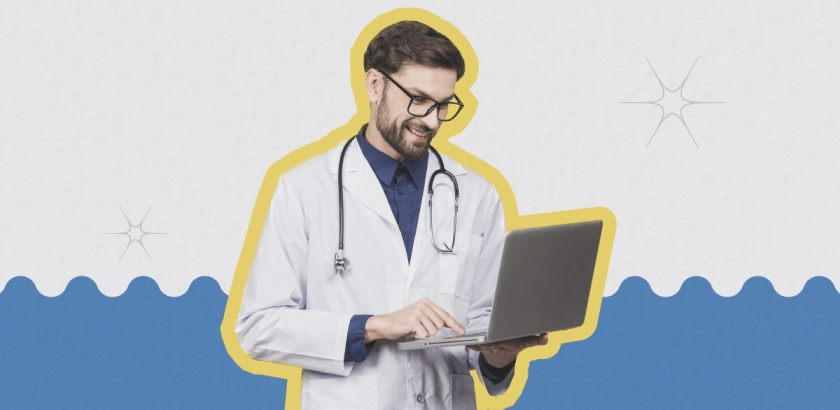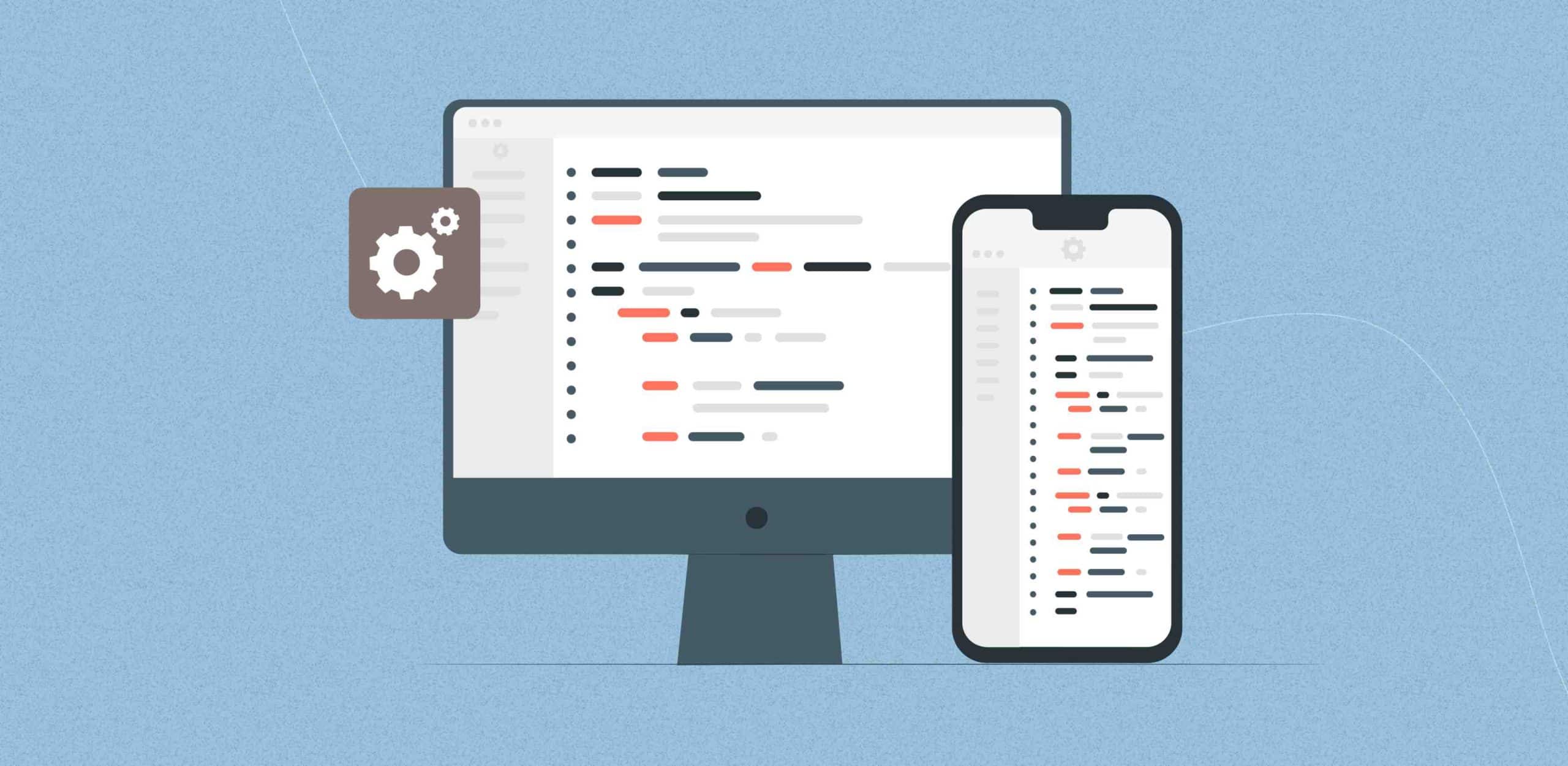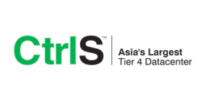Telemedicine software development has become an excellent investment since people’s consumption of healthcare services has been influenced by post-pandemic realities. According to McKinsey, over 40% of surveyed consumers stated that they would continue to use telemedicine services after the lockdowns, having experienced the benefits of remote healthcare delivery.
This blog will explore 3 key elements to consider while optimizing the customer experience in the development process of telemedicine solutions. Prior to that, let’s get to know more about telemedicine software development.
What is Telemedicine software development?
Telemedicine software development is the process of creating digital tools that enable healthcare providers to deliver medical services remotely using video conferencing, messaging, and other virtual communication technologies. Telemedicine is a rapidly growing field, driven by advancements in modern technology, and has gained even more momentum with the COVID-19 pandemic, as mentioned above. It has been essential in providing medical care while maintaining social distancing.
Telemedicine is beneficial for both healthcare providers and patients. It allows doctors to extend their reach, offer services outside their geographical area, and improve their efficiency. Patients can receive medical care in the comfort of their own homes, saving them time and reducing the risk of exposure to infectious diseases. Telemedicine software development has a significant role in enabling the success of telemedicine by offering seamless customer experiences.
Contact us today and take the first step towards a more accessible and efficient healthcare system.
How modern technology has fueled the success of telemedicine?
Telemedicine has grown exponentially over the past decade, thanks to advancements in modern technology. And here are some of the key technologies driving the success of telemedicine.
High-speed internet
Telemedicine requires a high-speed internet connection to support video conferencing, file sharing, and other virtual communication tools. The widespread availability of high-speed internet has made it possible to deliver remote medical services to patients across the globe.
Mobile devices
The rise of mobile devices has made it easier for patients to access telemedicine services. With smartphones and tablets, patients can connect with healthcare providers from anywhere, at any time, making the services more accessible and convenient.
Cloud computing
Cloud computing technology provides a flexible and scalable platform for telemedicine software development. It allows healthcare providers to store and access patient data securely, making it easier to deliver personalized medical services.
Telemedicine software development has taken advantage of these and other modern technologies to create digital tools that deliver seamless customer experiences.
What are the 3 key elements to consider while optimizing the customer experience?
Here are three key elements to consider while optimizing the customer experience in telemedicine software development:
User Experience Design (UX)
User Experience Design (UX) is a critical component of telemedicine software development. The goal of UX design is to create digital tools that are intuitive, easy to use, and offer a seamless customer experience. Telemedicine software should be designed with the patient in mind, ensuring that they can navigate the platform easily, schedule appointments with a few clicks, and access medical services without any barriers.
In the development process, UX design should consider the unique needs of patients who may be experiencing medical conditions that affect their cognitive abilities, such as dementia or Alzheimer’s disease. The platform should also be accessible to people with disabilities, such as hearing or vision impairments. Telemedicine software developers should focus on designing a user interface that is easy to use, even for patients who are not tech-savvy.
Security
Security is a critical component of telemedicine software development. Patients’ medical information is sensitive, and it must be kept confidential at all times. Telemedicine software developers should take necessary measures to secure patients’ data, including encryption, secure authentication, and backup procedures.
In telemedicine, the risks of data breaches and cyber-attacks are particularly high. Healthcare providers must comply with regulations like the Health Insurance Portability and Accountability Act (HIPAA) in the United States. This means that telemedicine software developers must ensure that their platforms are HIPAA-compliant, protecting patients’ privacy and keeping their medical information secure.
Integration
Telemedicine software should be designed to integrate with other medical software and tools, such as electronic health records (EHRs) and medical billing software. The integration enables healthcare providers to streamline their workflows, making it easier to deliver medical services and manage patient data.
It should also integrate with various communication channels such as email, SMS, and chatbots to improve communication with patients. This integration improves the patient experience by providing them with a seamless and efficient journey throughout their healthcare journey.
To achieve this level of integration, telemedicine software developers must take a comprehensive approach to development. They should prioritize building flexible, modular systems that can easily integrate with other software and systems. They should also ensure that the telemedicine software is scalable to support growing user bases and changing requirements.
Conclusion
Optimizing the customer experience has become a critical aspect of doing business in the digital age. Implementing these key elements can help businesses build customer loyalty, increase customer satisfaction, can provide a personalized and seamless experience for their customers, and drive business growth.
Enfin has extensive experience in telemedicine software development, having created several telemedicine software solutions for clients across the healthcare industry. Our software development team uses the latest technologies and design principles to create solutions that are easy to use, secure, and fully integrated with other healthcare systems. If you are looking to implement or custom-develop a telemedicine software solution, please contact us to learn more about how we can help you.
Let’s transform your business for a change that matters.
F. A. Q.
Do you have additional questions?
Telemedicine software development is the process of creating digital tools that enable healthcare providers to deliver medical services remotely using video conferencing, messaging, and other virtual communication technologies.
Some of the key technologies driving the success of telemedicine include high-speed internet, mobile devices, and cloud computing. These technologies provide the necessary infrastructure and flexibility to create digital tools that deliver seamless customer experiences.
It helps create digital tools that are intuitive, easy to use, and offer a seamless customer experience. This is particularly important in healthcare, where patients may be experiencing medical conditions that affect their cognitive abilities.
Patients’ medical information is sensitive and must be kept confidential at all times. Telemedicine software developers must take necessary measures to secure patients’ data, including encryption, secure authentication, and backup procedures.
Integration is essential in telemedicine software development because it enables healthcare providers to streamline their workflows, making it easier to deliver medical services and manage patient data. Telemedicine software should be designed to integrate with other medical software and tools, such as electronic health records (EHRs) and medical billing software, to create a seamless experience for patients and providers alike.














